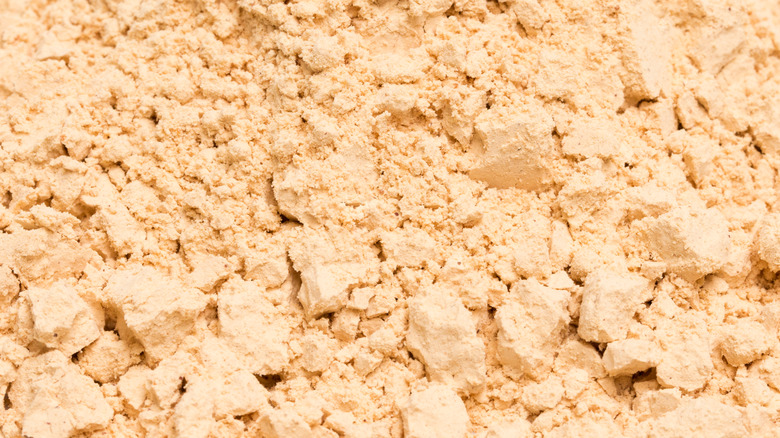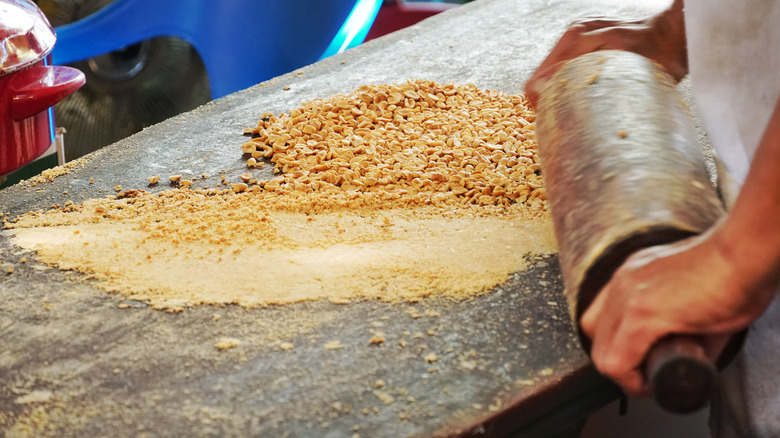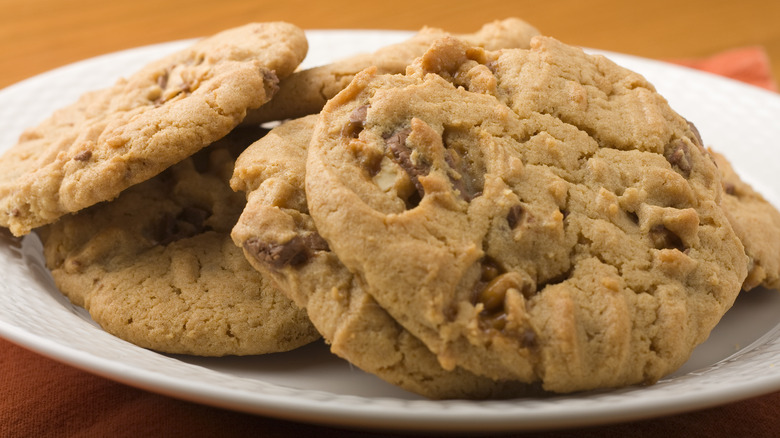Is Powdered Peanut Butter A Fair Substitute For The Real Deal?
For just about every ingredient in a recipe, there is a substitute that can add nutrients, save time, or even just pull you out of a bind when you realize your pantry is running low. For example, you can use coconut oil instead of butter in your next batch of cookies, and you can swap applesauce in many recipes to replace eggs, oil, or butter.
It seems logical, then, that you could use powdered peanut butter in place of the real thing; and in many instances, you can. However, it's important to think about the properties of peanut butter and peanut butter powder before you officially make the swap. If you've ever tried both, you know that the basic flavor is pretty similar — they both taste unsurprisingly like peanuts. If you just want to add some flavor (without adding too many calories) to something like a smoothie, powdered peanut butter is a good swap. However, if you're baking something like cookies, swapping powder for the real deal might cause your baked goods to become dry.
What is powdered peanut butter?
The process of making powdered peanut butter powder involves pressing and grinding roasted peanuts. This removes the oils naturally found in peanuts, which is what allows it to take a powdered form. Without the oils, powdered peanut butter might not taste as rich. It also changes the nutrient content a bit. With the reduced oil comes fewer calories from fat, meaning fewer calories overall when compared to regular peanut butter. Powdered peanut butter also has a higher protein content than regular peanut butter. This is why it can be a good swap for smoothies or yogurt bowls; it adds protein without adding calories.
When it comes to baked goods, however, the swap isn't as simple. The biggest thing to keep in mind is that some recipes rely on the oil in peanut butter for the final result to come out as intended. Swapping powdered peanut butter for the real deal in baked goods might leave you with dry and crumbly cookies or cakes because you'll be losing some moisture and oil content.
How to substitute powdered peanut butter for regular peanut butter
If you want to make the swap, think about what you're making first. If it's a sauce, smoothie, or other item that already has a high moisture content and doesn't require oil to bake, you'll probably be able to swap in powdered peanut butter powder, no problem. You'll still get that nutty flavor. You can sprinkle the powder directly onto the food to your liking. If you're following a recipe that calls for a set amount of peanut butter, rehydrate the powdered peanut butter and substitute it one-to-one for the regular peanut butter.
For baked goods, however, you might need to play around with the recipe a bit to get it just right. As a first step, try rehydrating the peanut butter by adding water. This will add some moisture, but it won't add oil, so you still might need to make some adjustments by adding extra oil to the recipe. Oil helps keep baked goods moist by capturing the gases released during the baking process, and it can also help bind ingredients together. If you're still looking to reduce the calories in your peanut butter baked goods, you can also try adding applesauce or Greek yogurt in place of oil to help your treats retain their moist texture, along with that delicious peanut butter flavor.


